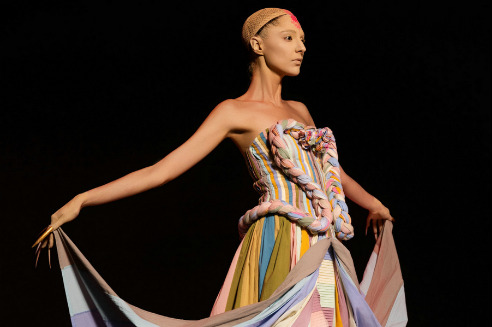Tibetan youths value cultural heritage


About 160 Tibetan people gathered at Dukezong in the majority-Tibetan city of Shangri-La on Saturday for a contest of a traditional Tibetan dance-Guozhuang.
It is believed that the prototype of "Shangri-La", an earthly paradise depicted in the 1934 fictional book Lost Horizon written by James Hilton, is Zhongdian county in Deqen Tibetan autonomous prefecture in Southwest China's Yunnan province. In 2001, the county was authorized by the central government to rename itself Shangri-La city.
Guozhuang dance is a favorite collective bonfire dance of Tibetans, allowing them to show respect and reverence to nature.
Wandering in the old town of Dukezong in the daytime, one can always see elderly Tibetans, mostly women, dancing in a circle while singing traditional Tibetan songs.
When dusk falls, Tibetan youths, after finishing a full day's work or study, will come outdoors to dance with a faster pace and more joyful music.
"Guozhuang dance has been about paying respect to nature since ancient times, but now when we dance, it is more about recording and passing down our ethnic memory and tradition with every step," says Losang Tashi, a 28-yearold Tibetan man in Shangri-La.
Losang Tashi has worked as a tourist guide for nearly seven years. The booming tourism in the city has given him more opportunities to make a living and understand the outside world, but the increasing number of tourists also means more working time, thus greater stress.
"When I feel bitterness in daily life, I always dance Guozhuang to relieve my pressure. It makes my mind fully relaxed," he says. "Just as many watch TV dramas and play online games to relax, many Tibetan youths like me are fond of dancing to our traditional music, so it means a lot to us."
The tourist guide has been enthusiastic about sharing the local stress reliever with visitors from across the world.
"When other non-Tibetan people watch us dancing, I can bring happiness to them," he says."I feel so satisfied when I tell tourists about what messages Guozhuang dance conveys."
In Nixi township of Shangri-La, locals have passed down an old saying for generations, "The most delicious tea is the butter tea made in black pottery by our mothers."
The special soil in Nixi has made it a major place for black pottery production. It is home to more than 100 varieties of black pottery with a history of over 1,000 years.
Larong Shoba, 28, was born in a family of black pottery makers. His father is one of China's earliest State-level intangible culture inheritors.
After graduating from college, he returned to his village to help his father develop his black pottery business.
"Our family can produce thousands of pieces of pottery and the sales amount last year exceeded 600,000 yuan ($84,740)," he says.
While believing the pottery inherits the crafts of his forefathers and records their ethnic cultural symbols, the young craftsman insists the pottery be reborn with new forms, instead of only being made into pots. He is willing to customize products to meet market demand, such as coffee cups and decorative pendants.
"My father always told me and other apprentices that we should learn how to make the traditional forms of the pottery first, then we are qualified to create new products on our own," he says.
"Thangka painting is a spiritual practice for Tibetan people," says Gesang Dawa, who opened the Shangri-La Thangka Institution in 2010 and has so far taught more than 200 students, for free.
Thangka are Tibetan Buddhist scroll paintings on cotton or silk with mineral and organic pigments derived from coral, agate, sapphire, pearl and gold. Originating in the 10th century, the paintings typically depict Buddhist deities with colors that can remain for centuries.
Senag Doji, a 20-year-old Tibetan local in Shangri-La, has learned thangka painting at the institution for over three years.
"Thangka represents a belief for Tibetan people and gives us spiritual support," says Senag Doji.
A delicate thangka work can take anywhere from a few months to several years to complete. "While we are painting, we also study sutras, calligraphy and Buddhist history, in a bid to inch closer to our spiritual practice," he says.
In 2006, China listed thangka as a national cultural heritage, a status that has since given the art a strong boost. UNESCO included thangka paintings, murals, patchwork crafts and sculptures as Intangible Cultural Heritage of Humanity in 2009.




































